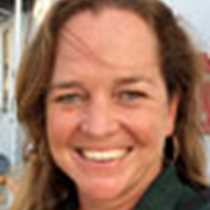The wonderful things about a trip to the Columbia River are the many dimensions one has to explore to get a general idea of the complexity of this place. These range from natural history aspects to historical ones, as this area is the stage of one of the greatest exploration expeditions of North American history. This was the journey of Meriwether Lewis, William Clark and their Corps of Discovery, sent by Jefferson in 1804 to discover the mythical Northwest passage, that would (had it existed) so greatly aided trade and commerce across the continent. This courageous enterprise soon discovered a land far more complex than was imagined back east, as the Great River of the West, far from running a straight course from east to west, runs through one of the more complex geological regions of the world.
In fact, the Columbia occupies a stage of geologic drama so extreme that for fifty years it defied belief: until approximately 12 million years ago huge cracks split the crust in the Idaho border region, and oceanic magmas poured out in volumes possibly matched only by India's Deccan Plain. Hundreds of lava flows, spaced over 12 million years and separated by centuries, or even millennia, ultimately covered 100,000 square miles to an average depth of nearly a mile! The glacial era then created unbelievable, cataclysmic floods, which scoured the land like a sandblaster across old paint: here passed successive events, each of which contained ten times the flows of all rivers in the world, the evidence of which was everywhere we looked today. These floods created today's Palouse River canyons, and gouged out the Marmes Rock Shelter, where the earliest evidence of humans in the basin would be found (shortly before the site was drowned by the Lower Monumental Dam on the Snake River). All of this was starkly evident as we cruised along in Zodiacs, or paddled our kayaks up the Palouse River: we were positively dwarfed by the immensity of the phenomena that had created our surroundings.
Once back on board, the Sea Bird continued its course down the Snake River, as we made the most of the wonderful climatic conditions and had an on-deck barbecue, shortly before cruising alongside yet more of the most amazing columnar basalts to be seen anywhere in the world. All these awe-inspiring phenomena were later made clearer to us by our resident Geologist, Jason, as he gave a talk and slide show on this most unique of areas.




